World's narrowest house by Jakub Szczesny
Polish architect Jakub Szczesny claims to have built the world's narrowest house, just 122 centimetres across at its widest point.
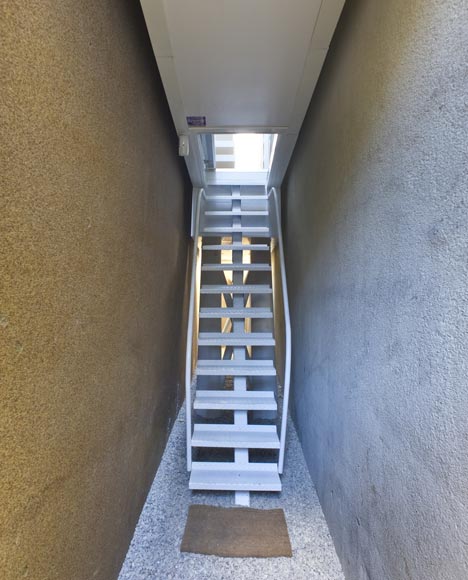
The Keret House is squeezed into a crevice between two buildings in the centre of Warsaw and will provide a temporary home for travelling writers.
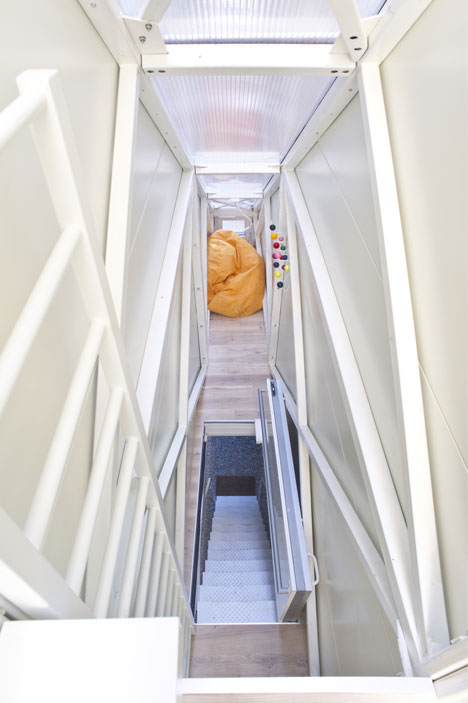
"It started with the space," Szczesny told Dezeen, after explaining how he came across the site when walking home one day. "I started to think who could live there. It had to be a person that would like to be a hermit, someone who would like to spend time alone doing something, but doing what?"
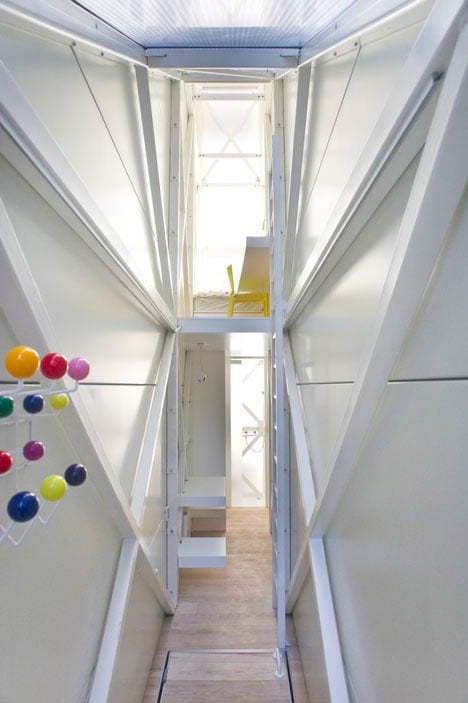
Szczesny, who is one of the co-founders of arts group Centrala, approached Israeli writer Etgar Keret to get involved in the project and the pair started developing a triangular house with just enough space for a single inhabitant to live and work. "It requires a sense of humour, as you cannot stay long in a place like this," joked Szczesny.
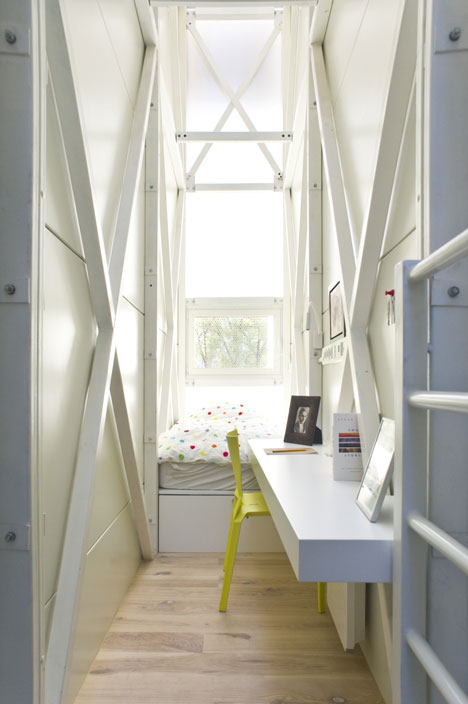
The body of the house is raised up on stilts and a staircase leads inside from underneath.
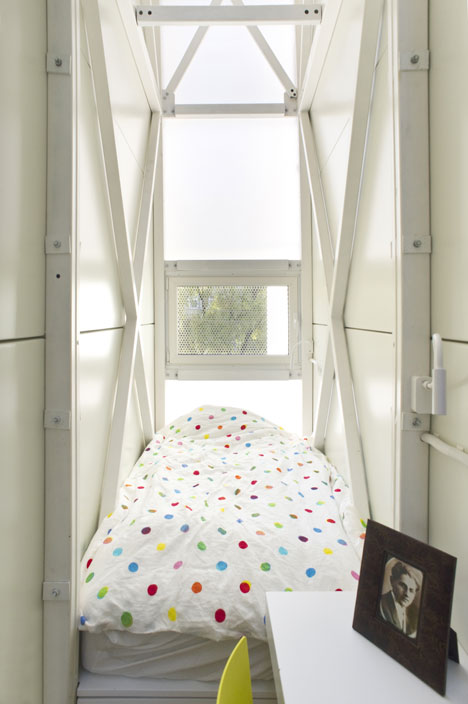
At its narrowest point the house is no more than 72 centimetres wide. "Everything was custom and everything needed to be pushed," said Szczesny, explaining how they managed to fit in all the necessary furnishings.
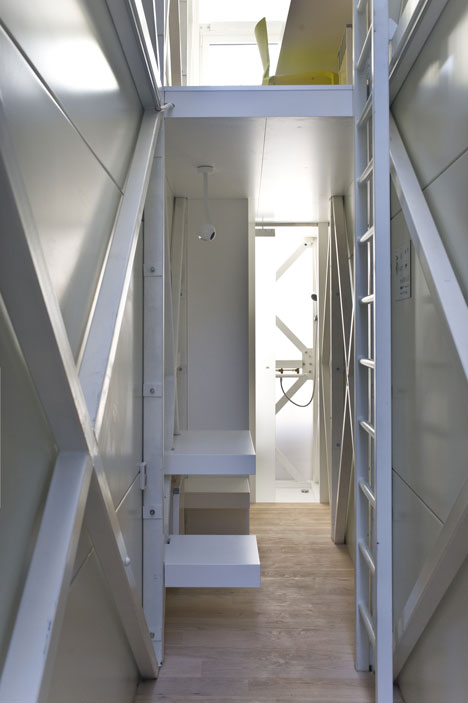
The house will remain in place for at least two years, but could end up staying for good. "It has already become a Warsaw icon and is already on the tourist map," said the architect.
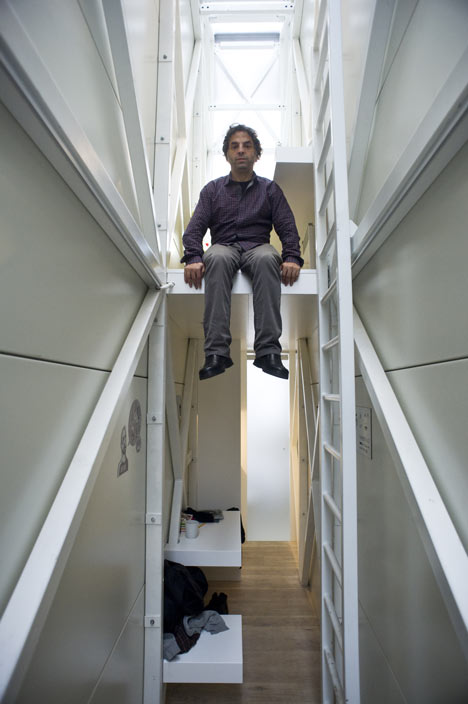
Other narrow buildings we've featured include a house with a two-metre-wide wing in Japan and an "eels-nest" house in Los Angeles.
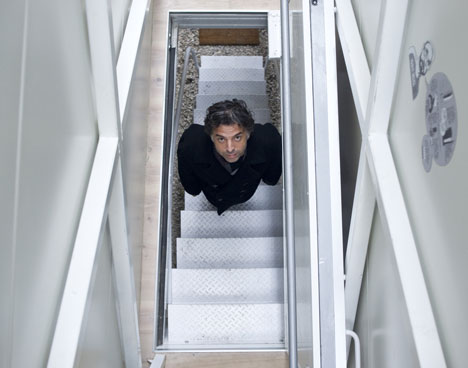
Photography is by Bartek Warzecha, © Polish Modern Art Foundation, The National Centre for Culture.
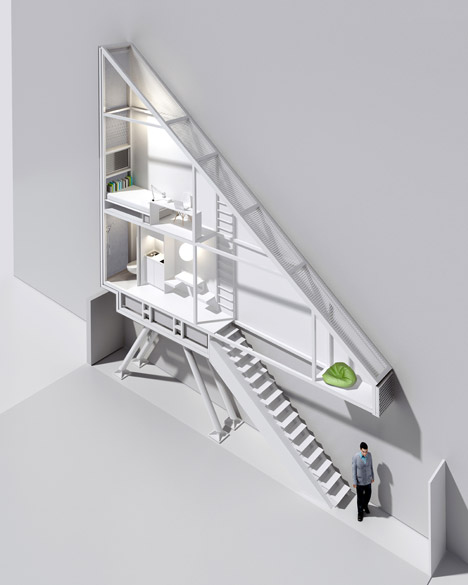
Here's some information from the project team:
The narrowest Keret House with the broadest horizons
Keret House is the installation art in the form of an insert in between two existing buildings. The project was launched on Saturday 20th of October in Warsaw. It is led by the Israeli writer Etgar Keret.
Keret House is fully functional space in which one can live as well as create. It is located between buildings at Chlodna 22 Street and Zelazna 74 Street. "We deeply believe it will become a symbol of modern Warsaw ingrained in its complicated history. The House attracts attention of media from entire world. He hope it will show the most fascinating side of Warsaw", say Sarmen Beglarian and Sylwia Szymaniak form Polish Modern Art Foundation, the curators of the project.
The House is located on the plot measuring 92 centimeters in its narrowest point and 152 centimeters in its widest point. "That is why at first it seems that the construction of living space within such premise is impossible. Keret House is to contradict that false image, simultaneously broadening the concept of impossible architecture", says the architect Jakub Szczesny. The house itself is 72 centimeters in the narrowest and 122 centimeters in the widest point.
In the fracture of history
The house is located between two buildings from two historical epochs. "The first is a brick building on Zelazna Street – a fragment of the pre-world war II city, almost no longer existing. The second – a cooperative concrete apartment building, an element of an "imposed structure", which was aimed at negating the previous city landscape. Their adjacency is coincidental – like many architectural structures in Warsaw. Keret House is a perfect example of the so-called "non-matching" in the city’s urban fabric. Another reason is the city’s war history – where the house is located, two ghettos - the large ghetto and the small ghetto met. Only a few steps from the house, a bridge connecting the two closed spaces, stood", explains Jakub Szczesny.
Project's founder/concept designer: Jakub Szczesny
Art curators: Sarmen Beglarian, Sylwia Szymaniak
Executive producer: Joanna Trytek – Black Salt Production
Organiser: Polish Modern Art Foundation
Co-financing: the Capital City of Warsaw
Partner: National Centre for Culture
Sponsor: LHI
General conctractor: AWBUD
Partners: GIRA, Kingspan, Decoroom, Volunta Parket, Milantex, Polish Institute in Tel Aviv, White & Case, Kostrzewa PR, Chylinski Family, Jewish Community in Warsaw, Chlodna Comedy Club, PMG Partners, Biuro Wystaw.